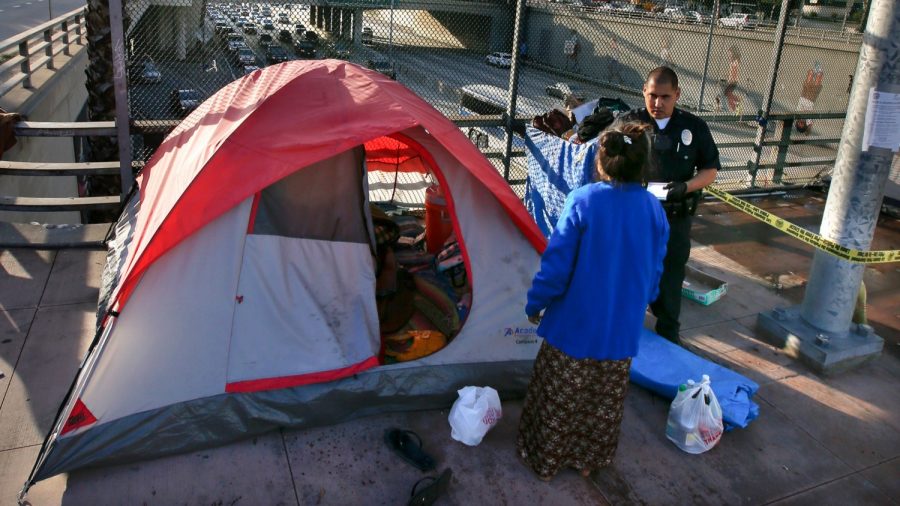The Ugly Truth of Homelessness
America is concerned with its homelessness problem for the wrong reasons.
PHOTO | MCT Campus/TNS
The city of Los Angeles has agreed to pay more than $800,000 to settle a lawsuit over the confiscation of homeless people’s possessions. Above, a police officer talks with a homeless woman on a downtown freeway overpass in March.
America has a homelessness problem. Out of 10,000 people, it’s estimated that 17 are experiencing homelessness every night. However, rather than being invested in ending homelessness out of empathy, the United States is only interested in the cosmetic side of the issue—taking great lengths to simply prevent the homeless from being seen. President Donald Trump said that the visible homeless population in California ruined the “prestige” of its cities, ignoring the hardships the homeless face in favor of making them seem like nothing more than an unappealing mark on society.
The rise of hostile architecture is one such trend that emphasizes America’s desire to keep the homeless out of sight. People are prevented from sleeping in more comfortable areas of the street for the sake of keeping things looking aesthetically pleasing. San Francisco installed boulders in a place common for homeless encampments. Sandiego placed a rock garden under a bridge to deter the homeless from sleeping under it. These preventative measures do nothing more than harm the homeless population. Rather than being able to use more sheltered places, they’re forced to go out to where they are more heavily exposed to the elements, which can sometimes end in death.
In addition to hostile architecture, some cities have put measures into place to forcibly remove the homeless population on their streets. Seattle prompted users of its “Find it, Fix it” app, which allows residents to request things like animal control and utility repairs, to report the tents of homeless people for removal. More recently, Las Vegas banned sleeping or camping in public places. The law was put into place to help nudge the homeless into shelters, ignoring that homeless shelters can be worse than living on the streets. Women will avoid homeless shelters due to the unisex sleeping arrangements posing the risk of sexual assault. Shelters can be overcrowded, or force residents to live in terrible conditions. Violators of Las Vegas’s new law could face up to six months in jail or a $1,000 fine—an unjust punishment for people who are already suffering.
There is no quick and easy solution to ending homelessness. A potential first step could be a housing-first policy, which emphasizes giving those who are homeless a place to live and supporting them both financially and mentally until they are able to sustain stable housing on their own. Both Finland and Utah saw significant decreases in their chronically homeless populations, with Utah seeing a reduction of 91 percent. The issue with housing first comes with the expenses, as there’s no consensus as to where the money would come from. However, money spent on anti-homeless measures would be a start. Quick cosmetic fixes are not the answer to the homelessness problem. For long term solutions, the United States must take initiative in supporting and advocating for the homeless population.



